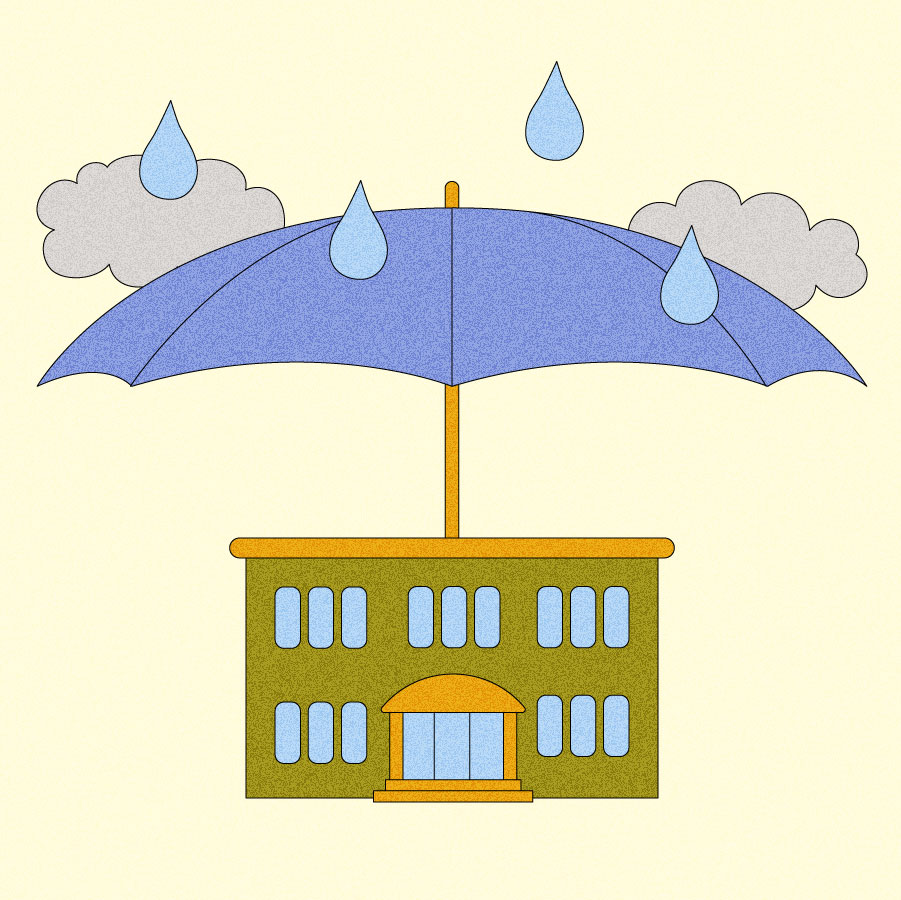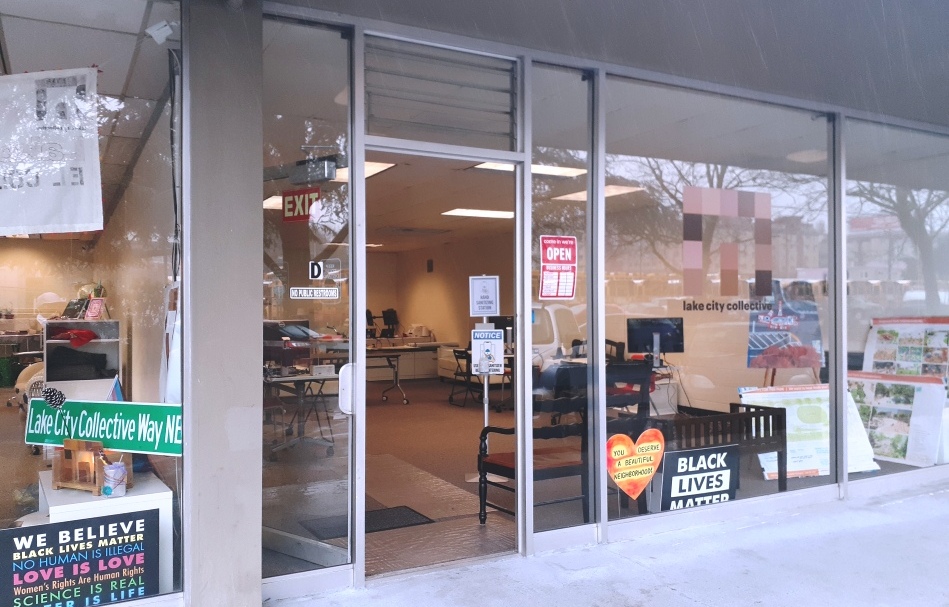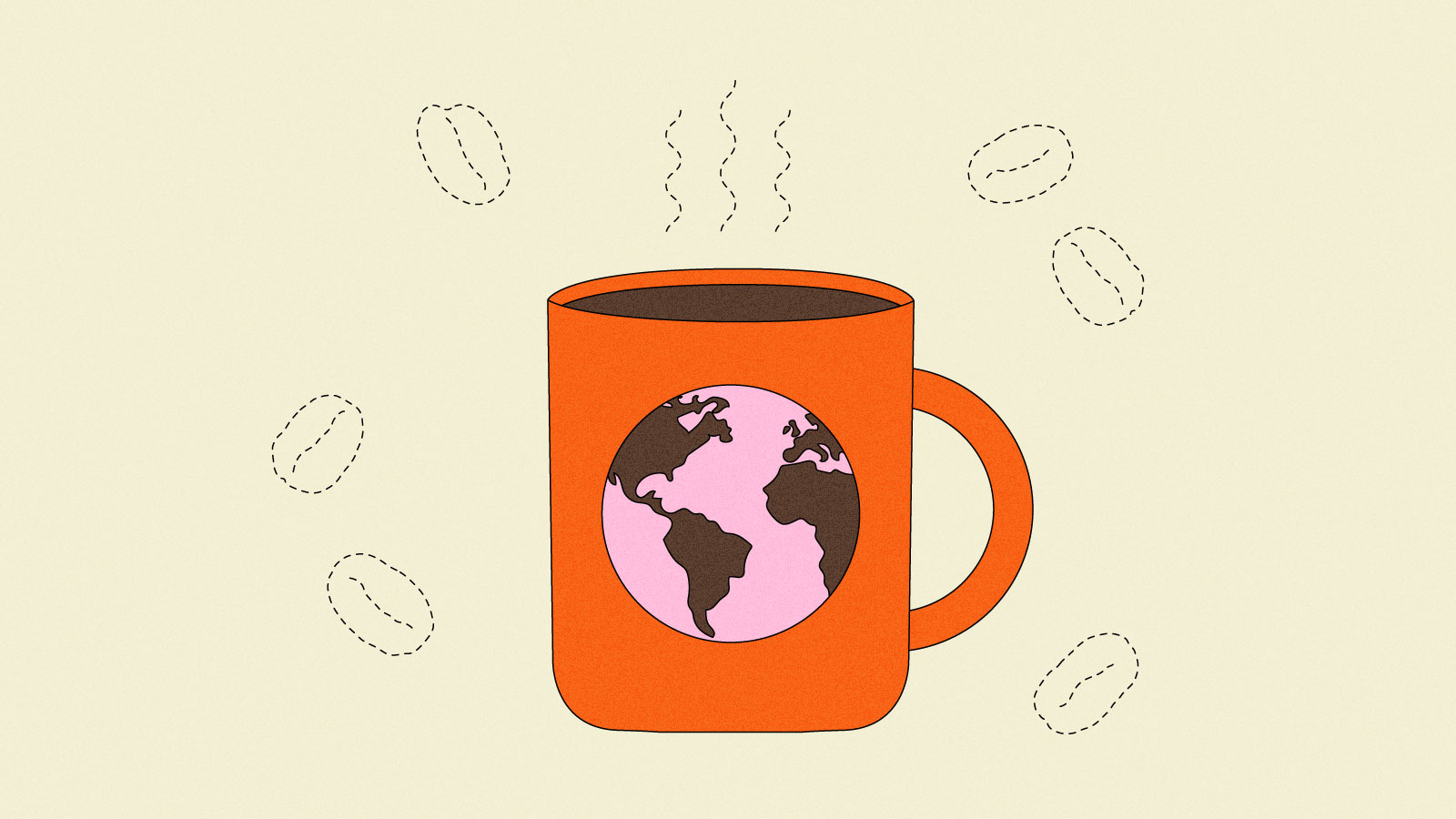From fiction to reality: How resilience hubs could help people weather disasters — and build community
“What would it look like to support trusted community spaces and almost create a microcosm of the world that we want to live in?”


The vision
Support:
this recipe is really good by the way. you should share it with the center, i’m sure they’re always looking for new vegetarian meals with locally grown produce.
Huaxin:
the what
Support:
you haven’t been to the community resilience center in your town?
Fifteen minutes later, Huaxin heard a knock on her door. She opened it, and then stared at the young woman who stood on her patio, grinning under a thin layer of sweat. “Hi!” the woman said. “Huaxin? I hear you’re overdue for a tour of the center.”
— a passage from “To Labor for the Hive,” by Jamie Liu
The spotlight
Do you have a regular haunt that you would call your “third place”? Somewhere you frequent, that is not your home or workplace, where the unspoken goal is to build community with the people around you?
The idea of a third place, pioneered by sociologist Ray Oldenberg over three decades ago, has received increasing attention in the wake of the pandemic and the social isolation it caused. Writers and scholars have suggested that third places — generally defined as physical spaces with low or no barrier to entry, that are designed for hanging out and relaxing — may be crucial for our psychological well-being and even for the healthy functioning of society. And they may also be a key part of climate resilience.
“We’re a communal species. We thrive when we’re in connection and belonging,” said Baja, the director of direct support and innovation at the Urban Sustainability Directors Network. “Resilience is not just around surviving a disaster, it’s around thriving in our everyday lives.” And that means having access to resources, having safe infrastructure, and having a sense of community.
In “To Labor for the Hive,” the winning story in Grist’s Imagine 2200 short story contest, author Jamie Liu envisions what a third place designed not only for community-building, but also for climate resilience could look like. In the snippet above, the story’s main character, Huaxin, gets introduced to the center for the first time after spending years in relative isolation. Min, the young woman who shows up on her doorstep, takes her (on their solarbikes) to a former utility office that has been repurposed into a community center. We see it through Huaxin’s eyes:
Inside, the center felt much cozier. It had a huge open space with tons of tables and couches, kitchens, bathrooms with showers, libraries, private rooms for sleeping or other activities, power stations, a clinic, recreational activities like ping-pong, playsets for children, and both an indoor and outdoor garden. It felt like a home but meant for hundreds of people.
Min informs Huaxin that the center was intended to be a gathering space during disasters, like floods or heat waves — and toward the story’s end, it serves that purpose; when an intense heat wave descends on the town, everybody knows to come to the center, and a network of volunteers goes out to find people who might have passed out at home. But the residents only know to use the center as a resource in a time of crisis because its role in the community on a day-to-day basis is far greater than that.
And that’s exactly how Baja and other experts say a true resilience hub should function.
In today’s newsletter, we are once again exploring “fiction to reality” — the link between one imagined version of a clean, green, just future and the seeds of that future that are taking root today. This time, we’re looking at resilience hubs — an approach that is gaining traction in the real world, and pushing many cities to reconsider both what emergency preparedness can look like and how to better serve residents when an acute crisis is not at hand.
![]()
In 2012, Baja (who goes by one name and uses she and ki pronouns) was working in hazard mitigation for the city of Baltimore. “One of the first things that the federal government told us was that we needed to be building emergency plans and kits with people.”
This is a pretty standard approach for disaster preparedness. Government funding tends to go toward individual preparedness, or to providing resources at government-owned spaces, like libraries and public schools (think cooling centers or clean air centers). As climate hazards have intensified, many cities have aimed to increase preparedness and resilience through these kinds of strategies.
But Baja had a background in racial equity and justice work, and this strategy struck her as insufficient. She wanted to begin by asking community members what they really needed, how they wanted to be approached, what would make them feel safe and cared for and protected from hazards.
What ki heard over and over again was that people who had historically been underserved, understandably, didn’t trust the government. But they did trust community-based organizations that were already doing the work of providing essential services and fostering community connection. Baja began to see that the key to real hazard mitigation, for the populations that needed it most, was activating those existing spaces with the necessary resources and infrastructure to keep people safe before, during, and after disasters. Rather than developing their own outreach and education strategy and handing out kits, Baja thought, the government should be supporting these trusted spaces and groups, and letting them lead the way.
“I think anything where we’re saying, ‘Here’s an individual kit, go be an individual and care for yourself,’ that’s missing out on the entire essence of what resilience is,” ki said. Similarly, people won’t necessarily go to a building just because it has solar power and battery storage and air filtration — but they might go there for potlucks, cultural celebrations, or free dance classes for their kids. Building retrofits and power systems can be designed around programs and services that the community wants and needs.
From that year of conversations and stoop-sitting, the concept of resilience hubs was born. Not government-led readiness campaigns, but a holistic, community-led approach to making existing spaces that much more effective, and ready to support communities in times of disaster as well.
In 2017, Baja transitioned to a role with the Urban Sustainability Directors Network to help bring the concept of resilience hubs to more cities and towns across the country, and the idea has been gaining popularity. Although there’s no one-size-fits-all approach, ki developed a framework for what makes a site a resilience hub.
The sites themselves may be cultural centers, churches, makerspaces — ideally, they should be spaces that can accommodate large groups of people, that have reliable clean power and potable water access, room to store and prepare food, and, crucially, spaces that are visible in the community, where people know they can go and feel they belong. In one of the most surprising examples she has seen, a Baltimore resident opened up his home to be a resilience hub. “It was a four-story row home with a backyard and a storage shed, and he was already a well-trusted member in the community,” she said. Although, she added, in most circumstances that’s too much to ask of a single person or family, and it can create legal challenges as well.

The lead artwork from “To Labor for the Hive.” Stefan Grosse Halbuer
Liu’s story imagines resilience hubs as an antidote to loneliness, something that could benefit most everyone — and in the story, it does. But a future where there’s a resilience hub in every neighborhood may be a long way off. The more immediate priority, for Baja and others, is bringing government support to communities that have suffered decades of disinvestment and are at higher risk from climate impacts and other harms without these essential third spaces. “In a primarily well-taken-care-of community that already has a lot of their own assets — if their own homes are resilience hubs, they essentially don’t need those spaces,” she said.
Ki added that the word “resilience” is used because it’s bipartisan, and easy to grok. “It translates into academic spaces, it translates into government. But the reality of it is, these are enhanced community spaces that ideally are owned and managed by community, that are not centered on the hazard. They’re centered on the humans.”
![]()
In early 2020, Lake City Collective — a small but mighty community organization in the Lake City neighborhood in northeast Seattle — leased a commercial space that had stood vacant for over a year and was planning a grand opening of a new community center. Then the pandemic hit.
The qʷiʔqʷuʔ center (pronounced “kwai quo,” meaning “little water” in Lushootseed, an Indigenous language of the Puget Sound area) opened anyway. “People were excited that we had a space,” said Cesar Garcia, who runs the collective along with his wife. The center quickly became a hub for the community’s response to COVID. “We switched from planning our grand opening to, ‘OK, we are facing this big emergency. So what do we do?’”
The collective distributed PPE, food, and school supplies, and hosted three community vaccination events. All of this was possible because the organization was already well-known and trusted, and formed a cornerstone in the community. “A lot of the work that we do, it’s a lot of word of mouth,” Garcia said. “Our communities are connected. Even, we have seniors who do not know how to use social media — they manage to stay connected with us.”

The qʷiʔqʷuʔ center in the Lake City neighborhood of Seattle. Lake City Collective
Today, the center hosts cultural celebrations, community garden space, and services like tutoring and workforce development. “We fit in the real definition of a community resilience hub. We don’t focus on one thing because there are so many things that impact our families,” Garcia said. “And we really feel like climate change is really affecting, especially, communities like us.”
The city of Seattle is also developing a broader strategy for resilience hubs. Much like Baja’s year of listening and stoop-sitting in Baltimore, Seattle government representatives are taking a slow and intentional approach to finding out what different communities envision for climate-ready spaces that can also provide essential services. “Our community-based organizations, nonprofits, environmental justice organizers really were galvanizing around this idea of, What would it look like to support trusted community spaces and almost create a microcosm of the world that we want to live in?” said Lylianna Allala, Seattle’s first climate justice director (who was featured on our 2023 Grist 50 list).
In collaboration with the city’s Office of Emergency Management, Allala and her team are rolling out an engagement strategy this year, focusing on the neighborhoods that have been the most burdened by environmental racism and economic disparities. They plan to release a request for proposals for the city’s publicly supported resilience hubs by the end of 2024.
Lake City Collective’s space may ultimately be one of them. Through a grant from the Office of Planning and Community Development, the organization has purchased a nearby parcel of land where it plans to build a bigger, multiuse center, which will realize more of the community’s dreams for the kind of third place they want for themselves. “We have had meetings with our community members about the different aspects of the design, the features, all of what they like about the work that we do, what they would like to see,” Garcia said.
He hopes that the new center will be able to open in the next two or three years. When that dream comes to fruition, he said, it will be a victory that the whole community will share in. “Whenever that happens, we really want to make sure that all the people that contributed, with even small things, that they feel that they were part of that, that it’s their building, it is their home. That’s what we want.”
— Claire Elise Thompson
More exposure
- Read: a Q&A with Jamie Liu about their process and learnings in writing “To Labor for the Hive” (Climate Fiction Writers League)
- Read: more about “third places” and why they’re so important (The Atlantic)
- Read: about the development resilience hubs in Los Angeles (LAist)
- Read: more about the Lake City neighborhood and Seattle’s plans to build a new city-owned community center there (Seattle Times)
A parting shot
This illustration from the Urban Sustainability Directors Network shows the five foundational areas that define a resilience hub, according to the organization: programs and services (what kinds of activities and resources the space offers to the community); communications (how the center distributes information, both in an emergency and during normal times); the building and landscape itself (a resilient design that ensures the space will be secure in all kinds of circumstances); a reliable power supply; and operations personnel and processes to run the facility.

This story was originally published by Grist with the headline From fiction to reality: How resilience hubs could help people weather disasters — and build community on Feb 7, 2024.
What's Your Reaction?



















































